
10 minute read
AN AUSSIE (winter) LOVE AFFAIR
From pristine alpine settings to ochre-red desert and sun-drenched tropical beaches, winter in Australia will surprise and delight
WORDS BY EMILY HUMPHREY
ABOVE: Satellite Island
Did someone say ambience? This is the ideal time to embrace a crackling fire, mulled wine and heartening meals and in Australia, you’ll find stacks of idyllic cold-weather destinations to do just that. If you’d prefer to seek refuge in the tropics, the good news is that Australia is teeming with hot spots in the northern reaches of this beautiful, varied country where you can get a drenching of sun, not rain.
Baby, it’s cold outside
For a city break, Melbourne shines in the winter months, whether it’s with a heaving footy crowd at the MCG or a stroll through the cosmopolitan city’s laneways. Pop into one of the many world-class museums and galleries, like the National Gallery of Victoria or the Melbourne Museum. It’s cold but it’s not that cold – the average Melbourne winter ranges from 6.5–14.2 degrees (celsius), compared to just above freezing in a Copenhagen winter.
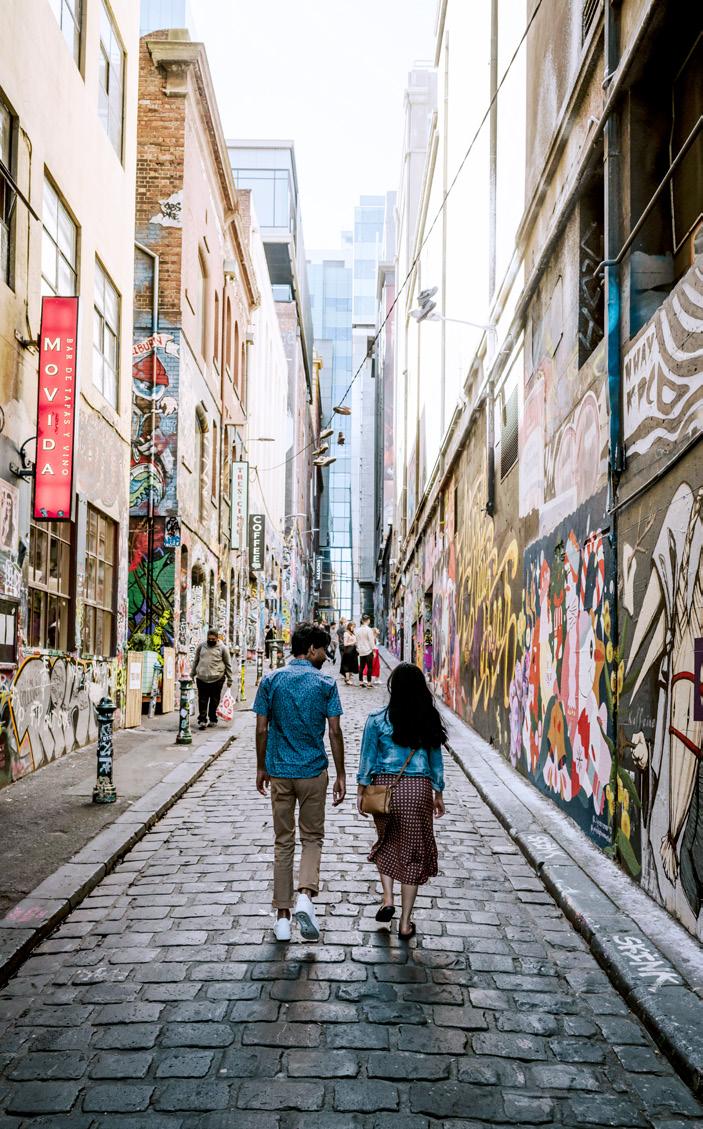
Hosier Lane, Melbourne
If you’d prefer to leave the hustle and bustle of the city behind, head for a nature-filled retreat in the countryside, like the Grampians National Park, a three-hour drive west of Melbourne. The Silo Art Trail, Australia’s largest outdoor gallery stretching over 200 km, is a must-do on the way. The Great Southern Touring Route is another scenic way to reach the Grampians, following the Great Ocean Road, passing by the Shipwreck Coast and into the Grampians (it then continues on to Ballarat).

"The Twelve Apostles" on The Great Ocean Road
It’s a great time of year to hit the famed hiking tracks around here and the waterfalls are flowing, like MacKenzie Falls in the northern part of the Grampians. Head to the summit at Reeds Lookout for a stunning sunset, with enough time left in the evening to get back and enjoy staying toasty in front of a log fire at your accommodation. Already a prized cold weather destination, Tasmania boasts a rugged, unspoilt beauty that’s positively enchanting in the winter months. For a truly secluded getaway, it’s hard to beat Satellite Island – an entire private island on the most southern state’s southern coast. Bird watch, explore the island’s walking tracks, take a kayak out and shuck your own wild oysters. Satellite Island can be reached by a five-minute boat ride from Bruny Island across the D'Entrecasteaux Channel, or a 20-minute helicopter ride from Hobart.
Inspired to visit Victoria or Tasmania? Check out our tours: bit.ly/2Q4lPTf
Food and wine
Time to sniff out a black diamond: the start of winter marks truffle season, whether it’s the thrill of a truffle hunt in Margaret River, or sampling truffle-infused creations at Canberra’s annual Truffle Festival.
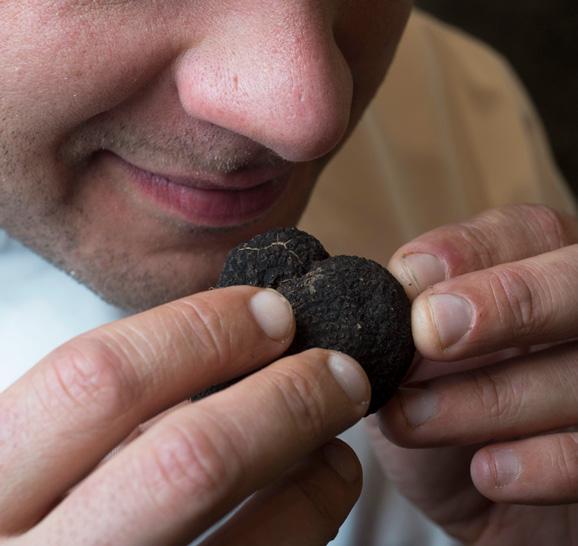
The historic Barossa Valley is revered for its proud wine industry’s richly-flavoured reds, especially shiraz. Here you’ll find some of the best wineries in the world and legendary brands like Jacob’s Creek, Torbreck and Peter Lehmann. At iconic Henschke, visit the cellar door housed in the original 1860s barn or take one of the private experiences on offer, like a tour with access to the renowned Hill of Grace vineyard and a tasting.

Red wine from the Barossa Valley wine region
Credit: Barossa Australia, Steve Kovac
Make things easy for yourself and get around the region on the Barossa Valley hop on, hop off bus. Cycling is another popular form of tourist transport around here.
Good wine goes hand in hand with good food, so take time for a long lunch at Seppetsfield’s FINO or Appellation at The Louise. Pay a visit to the Maggie Beer Farm Shop and hit up the Barossa Farmers Market every Saturday in Angaston for local, seasonal produce – even locally-produced gin! The Barossa Food and Wine Festival in August promises a month-long celebration of the region’s top restaurants and cellar doors.
Inspired to visit South Australia, ACT or Western Australia? Check out our tours: bit.ly/2Q4lPTf
Where the wild things are
Australians are spoilt for choice when it comes to whale watching, with more than 60 per cent of the world’s whale population found in our waters over winter. In Queensland, whale spotting in the protected waters of the Whitsunday Islands is common from June onwards. Hervey Bay and Fraser Island’s whale-watching season starts around July and finishes up by November (dolphins are around, too!).
South Australia boasts several great spots each winter to see the migration of southern right whales, including Kangaroo Island and the seaside town of Victor Harbor, an hour south of Adelaide. These distinctive whales can come close to shore as early as mid-May. At the Eyre Peninsula, a local guide will kayak with you around the bay, next to these gentle giants. In Victoria, the best viewing ops are around Warrnambool, Portland and Phillip Island.
Western Australia’s whale watching season begins in about May and runs to September, as pods of humpbacks and southern right whales head north from Antarctica. You might even spot blue whales. If you’re coming from Perth, a prime viewing spot a few hours south of the city is Flinders Bay in Augusta – southern right whales come here to calve.
Head up the Coral Coast to Exmouth (a 90-minute flight from Perth), at the northern end of the Ningaloo Coast World Heritage Area, to swim with humpback whales and whale sharks, the largest fish in the world. Ningaloo Reef, a fringing reef system that’s only metres from the shore in some areas, is home to a staggering number of marine wonders. Swimming with manta rays is another popular pursuit; year-round in Coral Bay, and with the highest numbers of these graceful creatures in Exmouth between May and November.
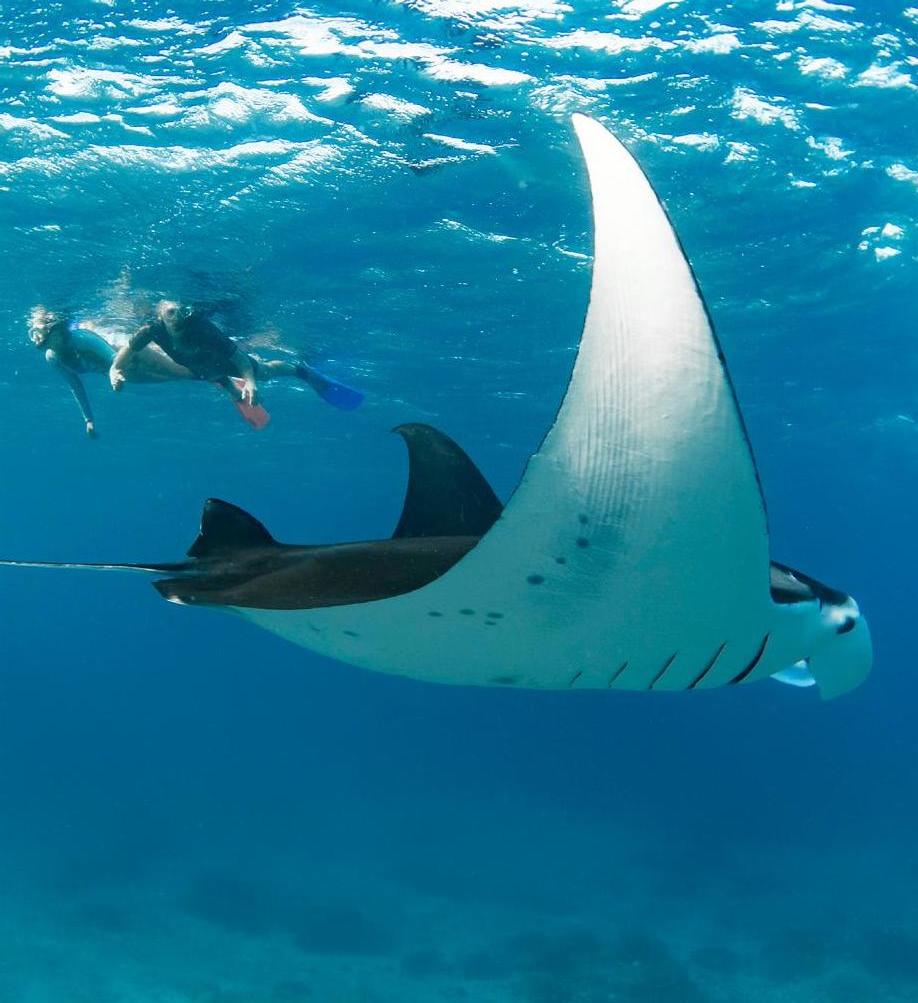
Manta Rays off Lady Elliot Island
It’s impossible to picture a marine paradise without mentioning the Great Barrier Reef; and in fact, two other hot spots for manta rays are Lady Elliot Island and North Stradbroke Island, on the southern end of the reef. Manta rays are particularly prevalent in winter months. The Great Barrier Reef is the only place in the world where you can also swim with dwarf minke whales each winter, in the tropical north.
Not just for the Arctic wilderness or Alaskan backwoods, there are dog sled adventure tours in various alpine settings down south. Ride through the snow-dusted countryside as gorgeous Alaskan and Siberian huskies faithfully pull sleds on Mt. Baw Baw, Mt. Buller, Hotham and Dinner Plain during snow season. For more encounters of the furry kind, pop into Mt Baw Baw’s Dingo Resource Centre to cuddle the resident dingoes or take one for a walk.
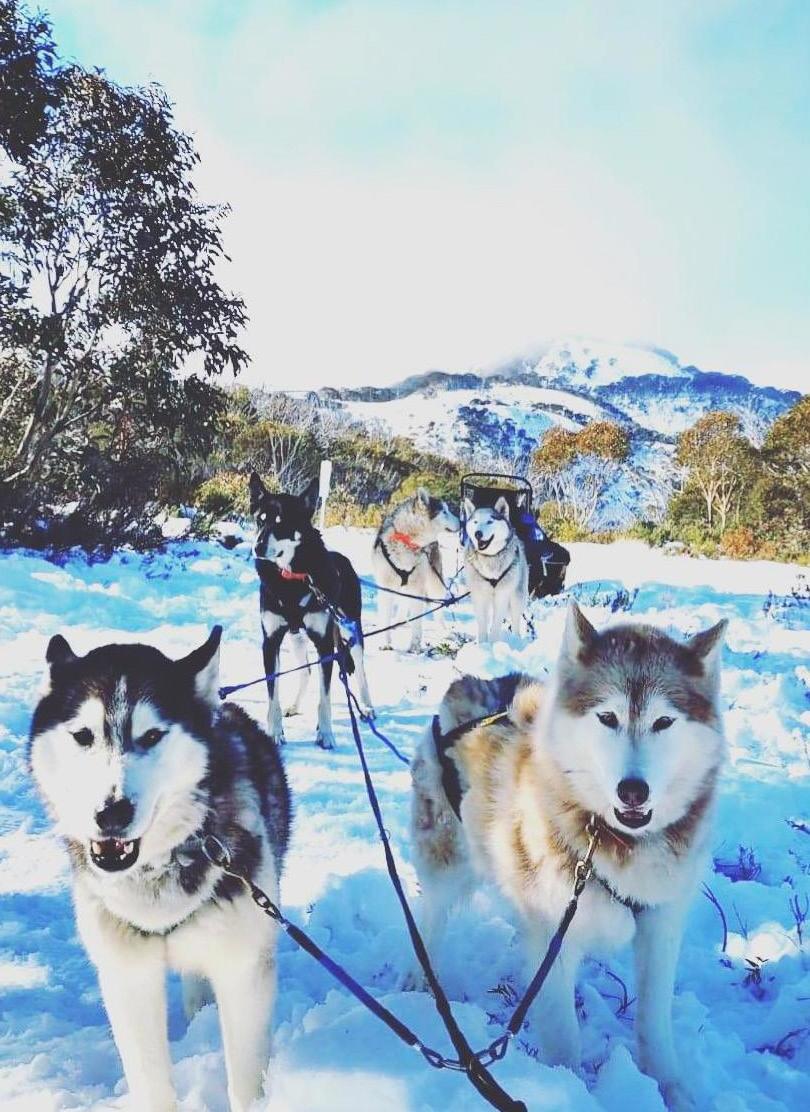
Huskies in the Victorian alpine region
At Phillip Island, you can see little penguins returning home at sunset to the largest penguin colony in the country. If you’re making a weekend of it, get back to nature at the Sheltered Glamping Co, an eco-friendly glamping experience that nails that balance of comfort and sustainability. The largest of the six safari-style tents comes with a wood-fired outdoor tub for soaking under the stars. Heavenly.

Little "Fairy" Penguins at Phillip Island
Inspired to visit QLD, South Australia, Western Australia or Victoria? Check out our tours: bit.ly/2Q4lPTf
Powdery fresh
A day on the slopes awaits! Australia’s tallest mountain, Kosciuszko (New South Wales) is home to Perisher and Thredbo. Falls Creek is Victoria’s biggest alpine resort whereas Mount Hotham, known as the country’s ‘powder capital’ and boasting the highest proportion of black runs in the country, attracts seasoned skiers. A Japanese-inspired outdoor onsen experience at nearby Dinner Plain can round out the apres-ski experience nicely.

A couple enjoy the views at Mt Hotham
Zip through the powder on a motorised snowmobile – at Hotham, even young kids (aged 5-14) can ride a miniature snowmobile. Tobogganing isn’t just for young families; grab a snow tube and head to Lake Mountain (Vic) for toboggan racing, or Tube Town at Perisher (NSW).
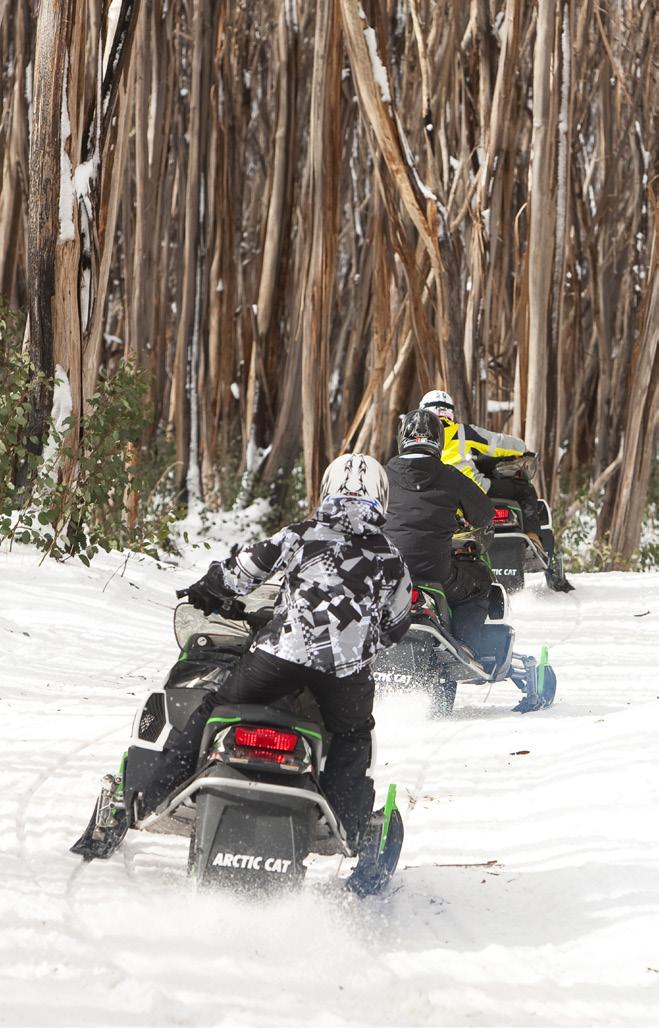
Snowmobiles at Lake Mountain
Ever contemplated the joys of snowshoe trekking? Beginners can start with the gentle snowshoe track along Rock Creek at Perisher, whereas Tasmania’s Overland Track is for serious trekkers.
Inspired to visit NSW, Victoria or Tasmania? Check out our tours: bit.ly/2Q4lPTf
Get away somewhere warm
The cold months in the southern parts of Australia actually mean it's dry season in the Top End and Red Centre – the perfect place to thaw out. At Uluru, the searing heat of summer is gone and there are fewer insects, which makes for a pleasant walk around the base. Stargaze in the outback: although nights are cold, it’s worth it for that clear desert sky. The days are still lovely to hike in Litchfield National Park and splash in Kakadu’s swimming holes, and it’s easier to get to all the famous waterfalls too, like Jim Jim Falls and Twin Falls. The Uluru Camel Cup, now in its 10th year, is at the end of May.
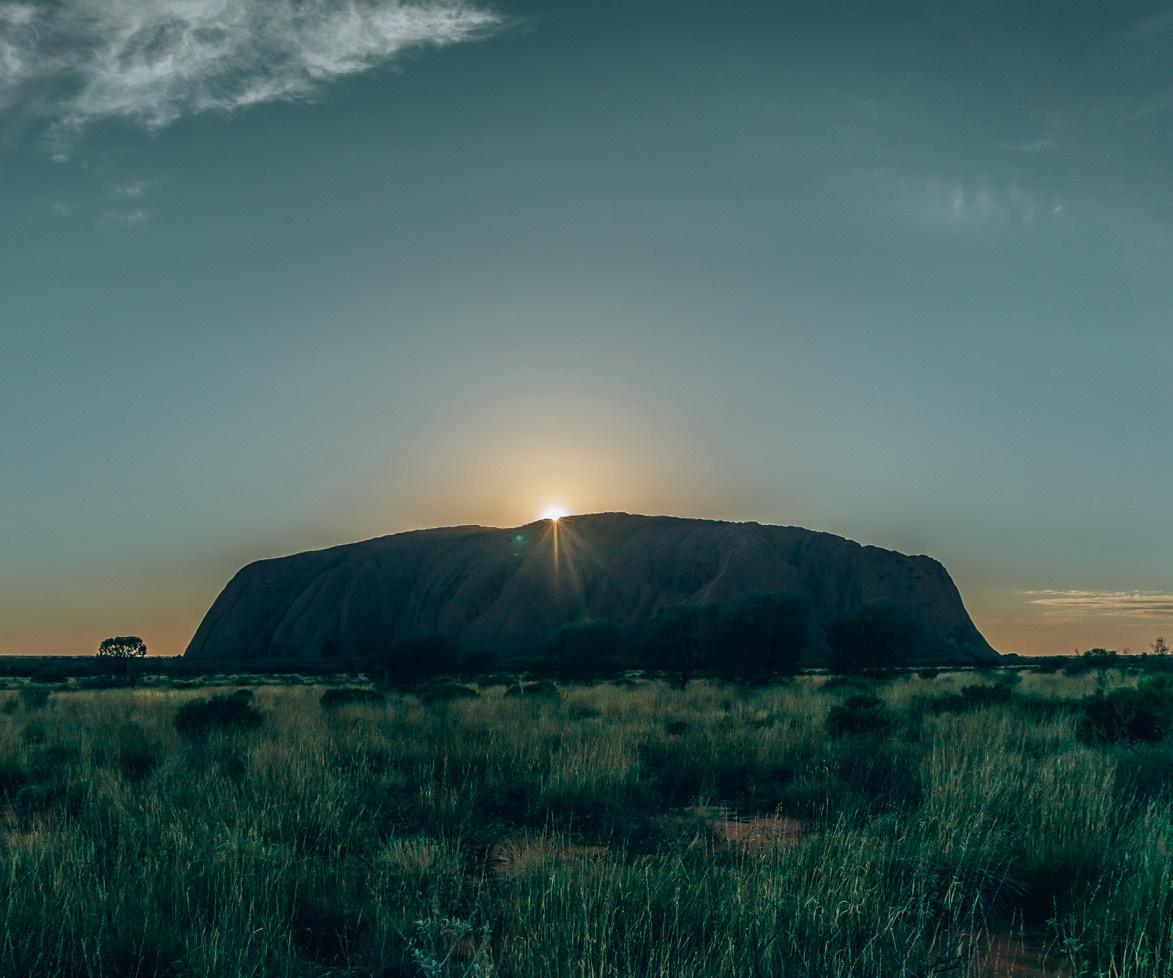
Uluru
Far North Queensland’s low humidity makes for a stunning escape and – bonus – it’s outside of stinger season. Head to Cairns, a jumping-off point for the Daintree and Great Barrier Reef, or choose from a lazy 74 islands in the Whitsundays to really get to the heart of the reef (read about island hopping in the Whitsundays here). Literally, about 60km north-east of Hamilton Island, you can see the infamous heart-shaped reef by helicopter.
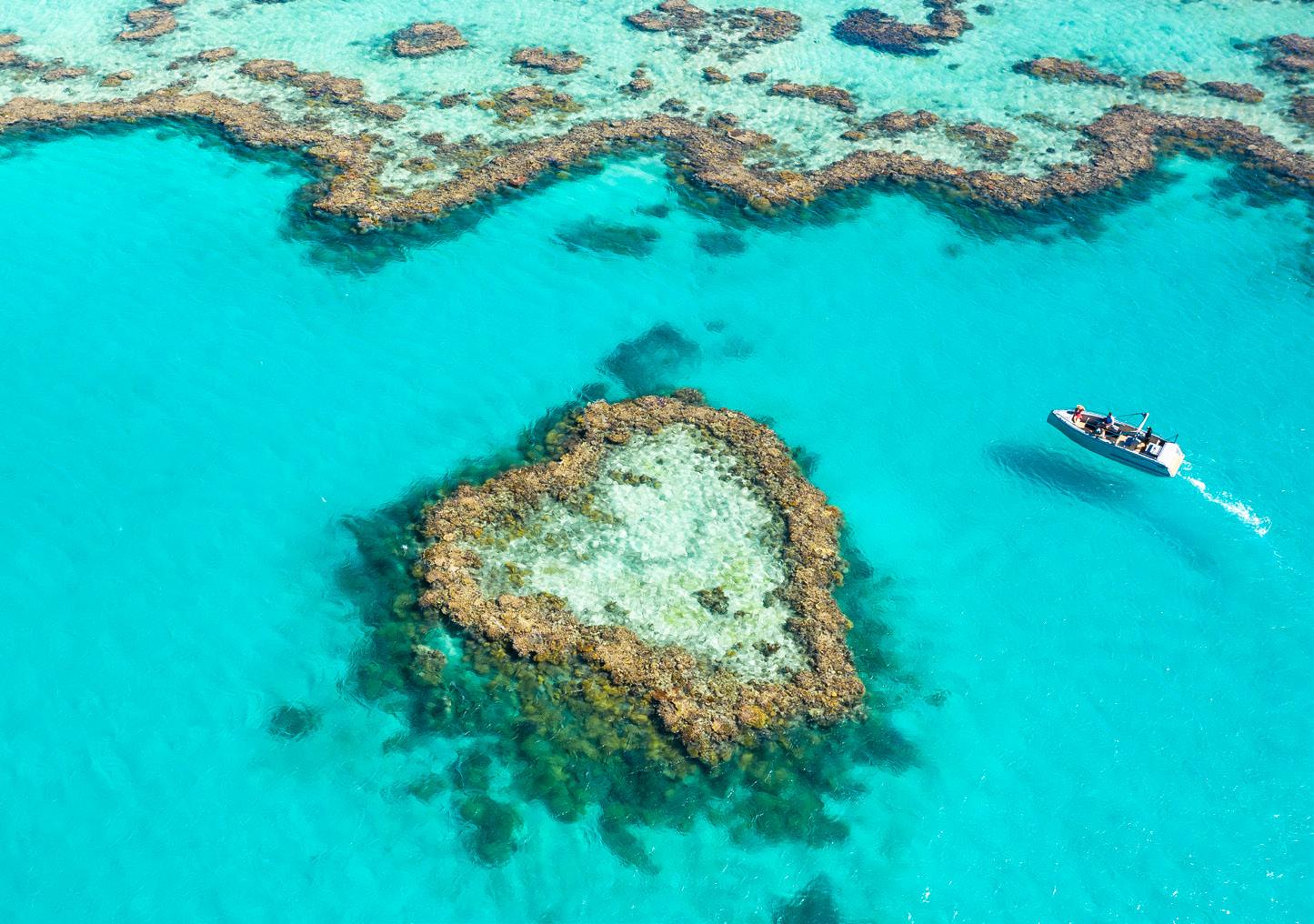
Heart Reef
Credit: Tourism and Events Queensland
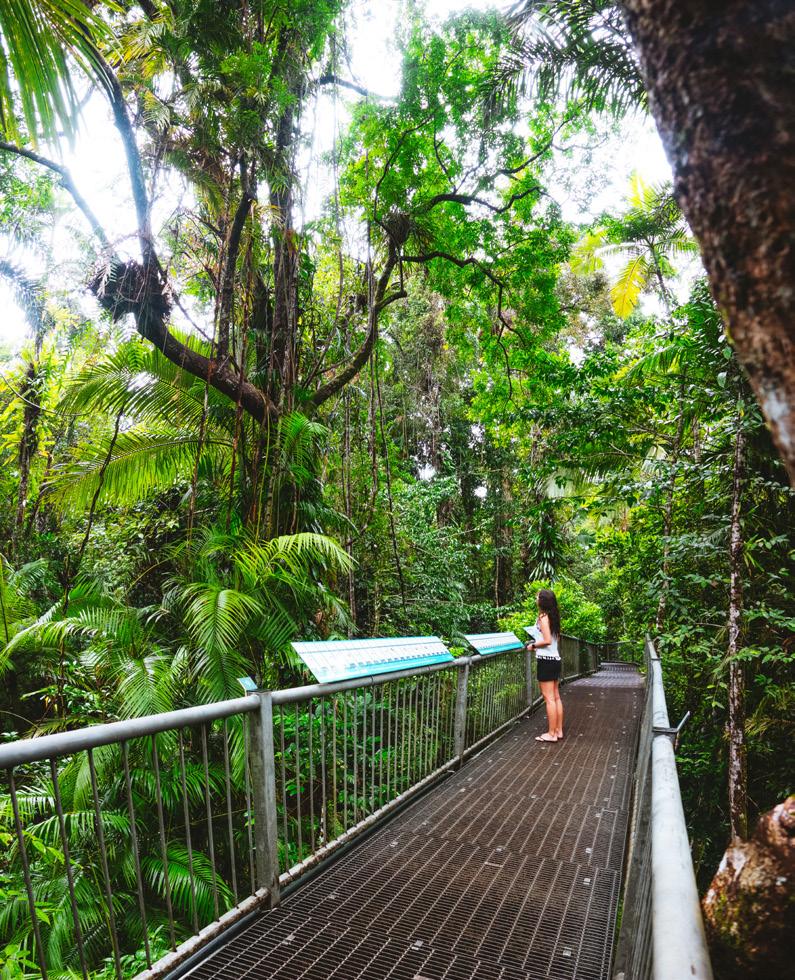
Daintree Discovery Centre
Credit: Tourism and Events Queensland
Dreaming of a camel ride on Cable Beach? You’ll love Broome’s relaxed, coastal town vibe. It’s the gateway to the Kimberley region so find as much time as you can to explore this aweinspiring corner of Australia: Cape Leveque, Bungle Bungle Ranges and Purnululu National Park all beckon. There’s so much ancient history and beauty here; it’s best to join a tour to experience as much as you can.
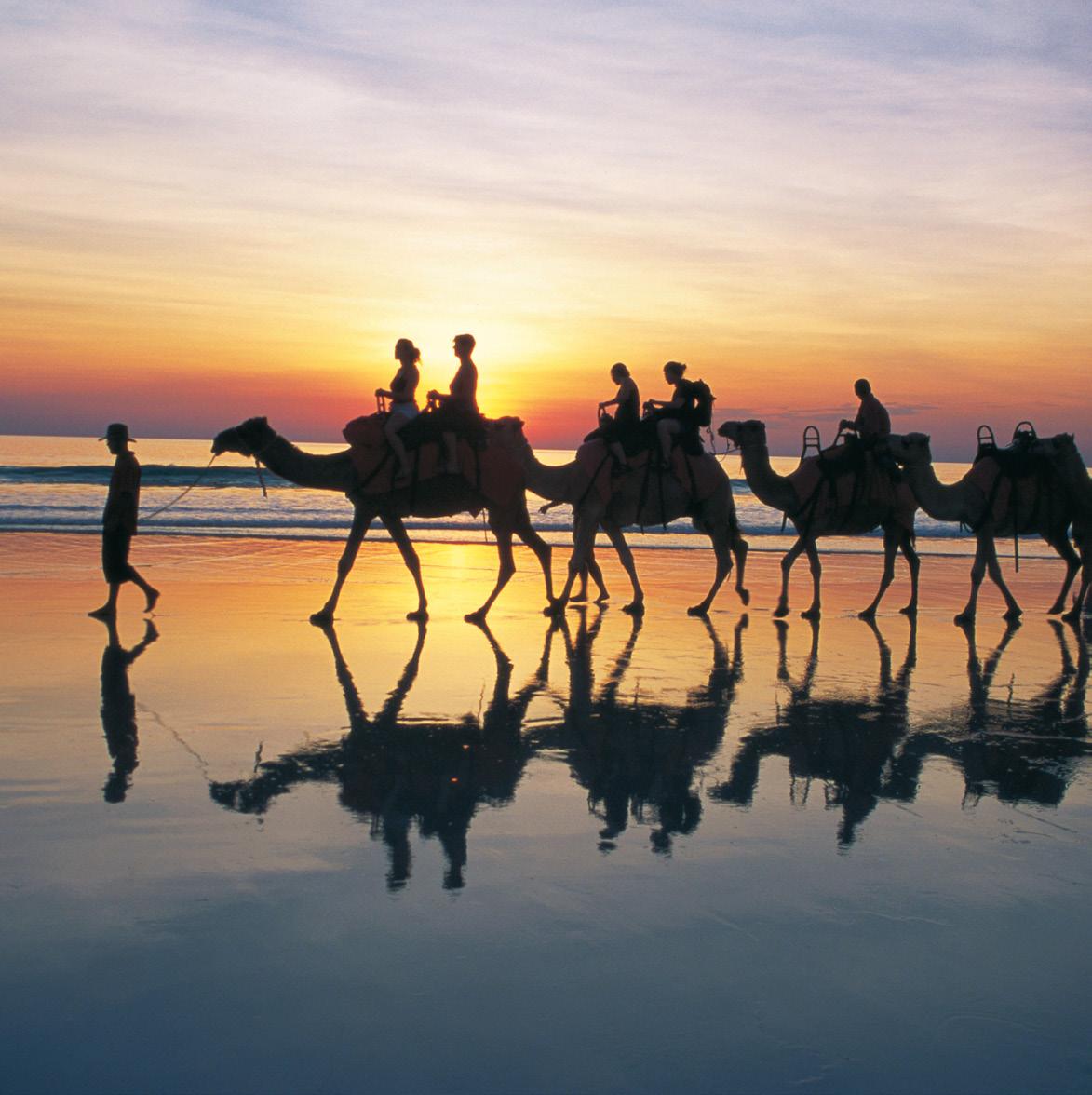
Camel riding on Cable Beach

Bungle Bungle Ranges
Inspired to visit NT, QLD, or Western Australia? Check out our tours: bit.ly/2Q4lPTf
Watch the skies light up
The northern hemisphere’s celestial aurora borealis (northern lights) phenomenon is certainly a bucket list item for most travellers, but have you considered the southern lights? Relatively accessible from Australia, winter is ideal for nature’s light show as you need complete darkness for optimum viewing conditions. Like their northern cousin, part of their allure is that they can be elusive. Take your chances and try to catch a glimpse from Tasmania, or hop onboard a charter flight to see the aurora australis in all its glory, dancing across the night sky in shades of blue and green. Pro tip: a proper DSLR camera can catch the nuances of the lights better than the naked eye, so brush up on your photography skills.
Inspired to see the Southern Lights? Check out our tour: bit.ly/3o1RbX2
Yule love it
There’s a festival for every taste in the colder months, from Sovereign Hill’s Winter Wonderlights Festival to MONA’s captivating midwinter festival Dark Mofo in Hobart. The Apple Isle is home to more than 50 distilleries so Tasmanian Whisky Week in August is the perfect chance to discover this thriving industry. In early August, the harbour city lights up for Vivid Sydney.
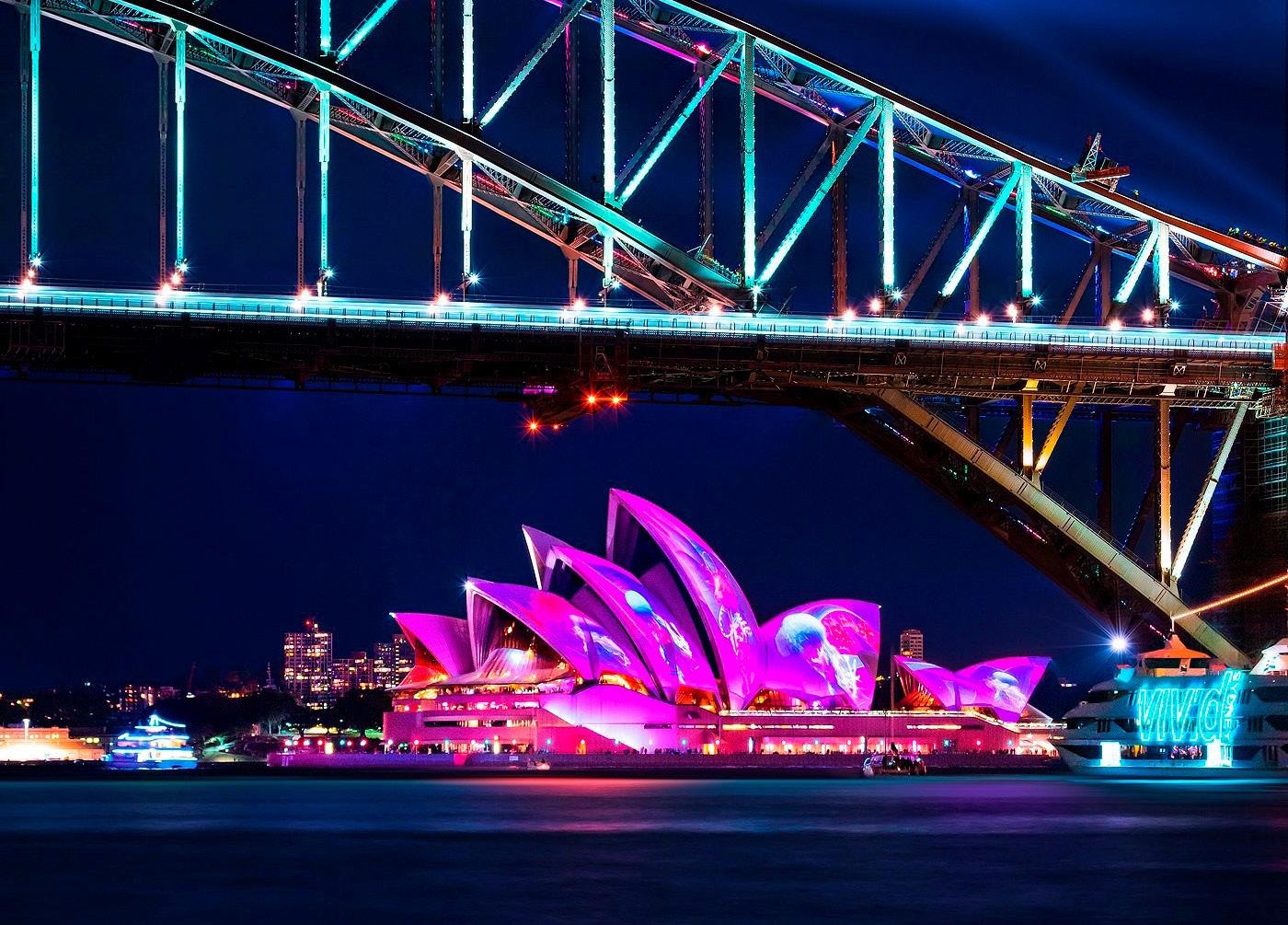
Vivid Festival light display over the Sydney Opera House and Sydney Harbour Bridge
Embrace Christmas in July with Yulefest in the World Heritage Listed Blue Mountains region, an idyllic winter setting that will have you dreaming of a European Christmas. This treasured yearly tradition brings Christmas cheer aplenty to charming villages and historic sites, whether it’s a traditional dinner with all the trimmings or meeting Santa at ancient Jenolan Caves. Katoomba’s vibrant Winter Magic Festival celebrates the winter solstice, with a market, street parade, performances and events.
Inspired to visit NSW or Tasmania? Check out our tours. bit.ly/2Q4lPTf









